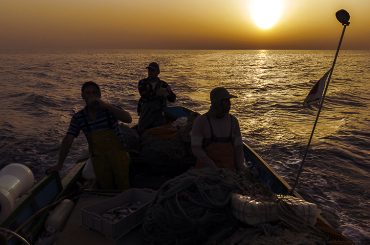The impact of rising temperatures on Malta’s energy system, which is already “adversely impacted,” is set to intensify as climate change drives up the temperature and, in a double blow, decreases annual rainfall by as much as a fifth. A new journalistic investigation now shows that Malta is one of the two (the other being Cyprus) statistical outliers within Europe, this website can report.
Europe is the fastest warming region in the world, and the journalistic investigation spanning 30 countries focused on the impact of warming on energy systems around Europe. The findings of the investigation pertaining to Malta are being published in this article in a cooperation between CORRECTIV.Europe and this website.
Among European countries, Malta and Cyprus are the worse affected – “both countries”, read a remark in the research brief disseminated among media partners, including this website, “are without comparison throughout Europe.”
The research suggests that the electricity outages experienced in the past two summers in Malta due to failures in grid and transmission systems may become a seasonal summer occurence as increasing temperature pushes up peak demand. These two elements – rising peak demand and problems in grid and transmission – are already two of the ‘adverse impacts’ of climate change in southern Europe generally.

The data-driven journalistic investigation looked at two measures, cooling-degree days and heating-degree days, and how that is impacting peak demand and energy systems. Of most relevance to Malta are cooling-degree days: a measure of total sum of degrees in Celsius that the temperature was over 21 degrees Celsius in the six-month period between April and September.

The total amount was then added up over the six-month period, and the data or additions of two separate decades was juxtaposed to demonstrate the rate of change. The two decades were 1979-1988 and 2014-2023. In Malta’s case, the number of degree days amounted to 458 in the first decade (1979-1988) and to 706 in the second data-set decade (2014-2023). This means that the number of degrees in Celsius that the temperature was higher than 21 degrees Celius, between April and September, increased by 35 percent over a span of around thirty years.
The research is based on data collected by the European Commission’s Joint Research Centre.
Data from the European Environmental Agency depicts a similar picture. It shows that average year-round temperature in Malta over the past few decades has increased by at least 1.36 degrees Celsius, and the need for cooling buildings has increased by 54 percent.
Dominic Royé, a researcher and official responsible for data science at the Madrid-based Climate Research Foundation, told the investigation that a key problem is the widening energy peaks. “With extreme temperatures, the system loses efficiency – at the same time, heating or artificial cooling using electricity increases energy demand. This can lead to an existing risk of grid overload.”
The electricity outages in Malta last summer, and the one before it, have been largely attributed to such grid overload.
Another factor that has been reported, yet remains unquantified, is a form of positive feedback loop caused by the increasing number of air-conditioning units – and more widely vehicles and urban spread. All of these increase the surrounding air temperature, in turn necessitating further use of energy for cooling.
Malta’s temperature is projected to rise by up to 5 degrees Celsius in the next sixty years unless global warming is halted. Rainfall is also projected to decrease by 17 percent.

This outlook and the ensuing impact on the grid and distribution system calls into question the sustainability of Malta’s economic and social activities of the past decade or so: the frenzied construction, the population increase due to immigration, and the increasing numbers of hotels and tourists. It also calls into question Malta’s preparedness – or more precisely the lack of it – in dealing with the strain on Malta’s electricity grid.
Featured Image: Drying pond showing signs of eutrophication surrounded by parched farmland (Picture Copyright: Victor Paul Borg)
Would you keep this project afloat...
I rely on donations and grants to sustain myself and keep this website running. Income from donations this year has only been enough to cover technical costs of running this website. Keep me sustained so that I can continue delivering professional, well-illustrated articles on this website that no one else does consistently in Malta. Contribute as little as €5 to sustain this website's authoritative journalism that reaches a key audience, serves as reference, and becomes amplified over time.





